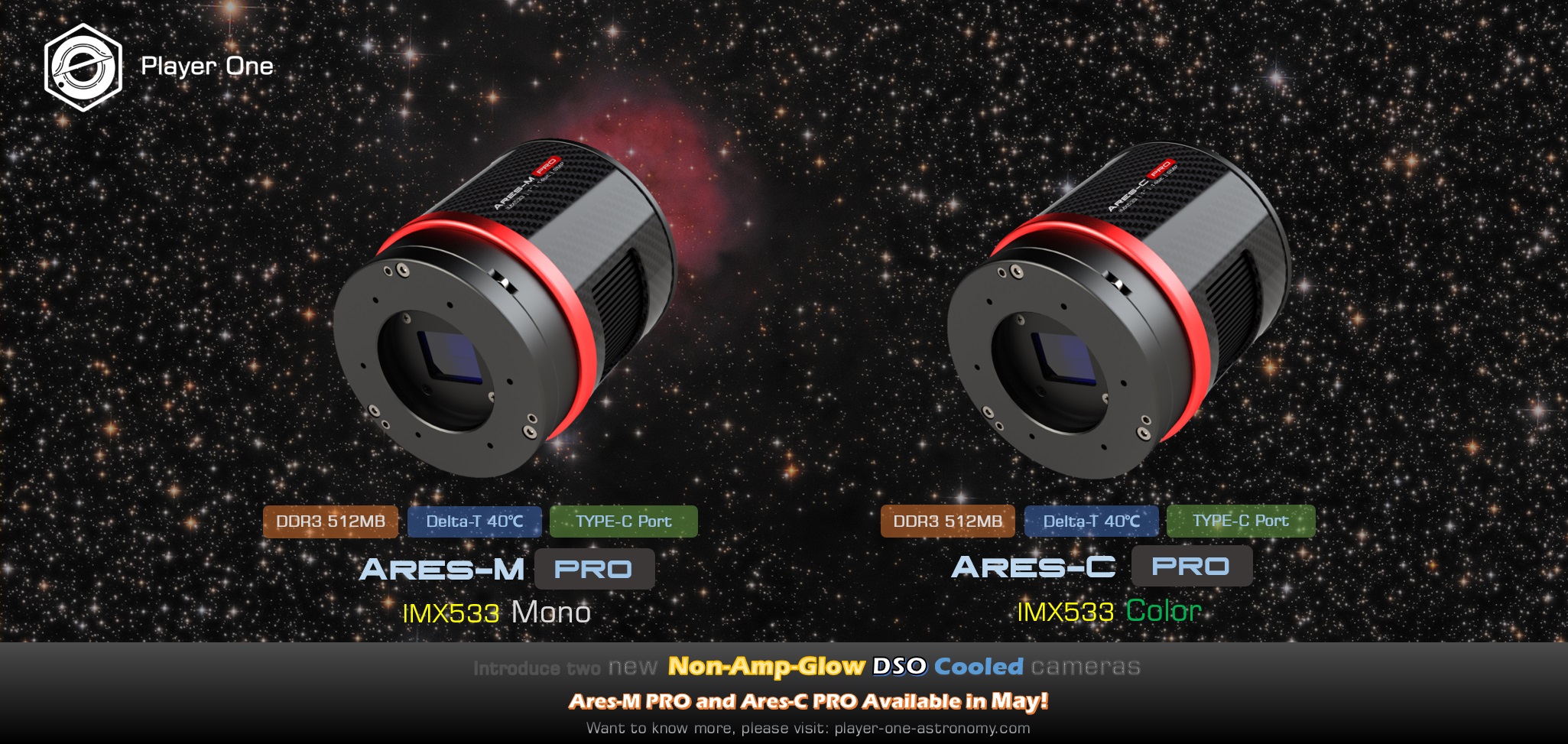
Features:
DSO cooled camera line is the most advanced product line in Player One history. We start the project from 2021, through a lot of modify and rebuild we made this final version. It brings our newest technology and design to everyone, we are very proud to introduce this camera line.
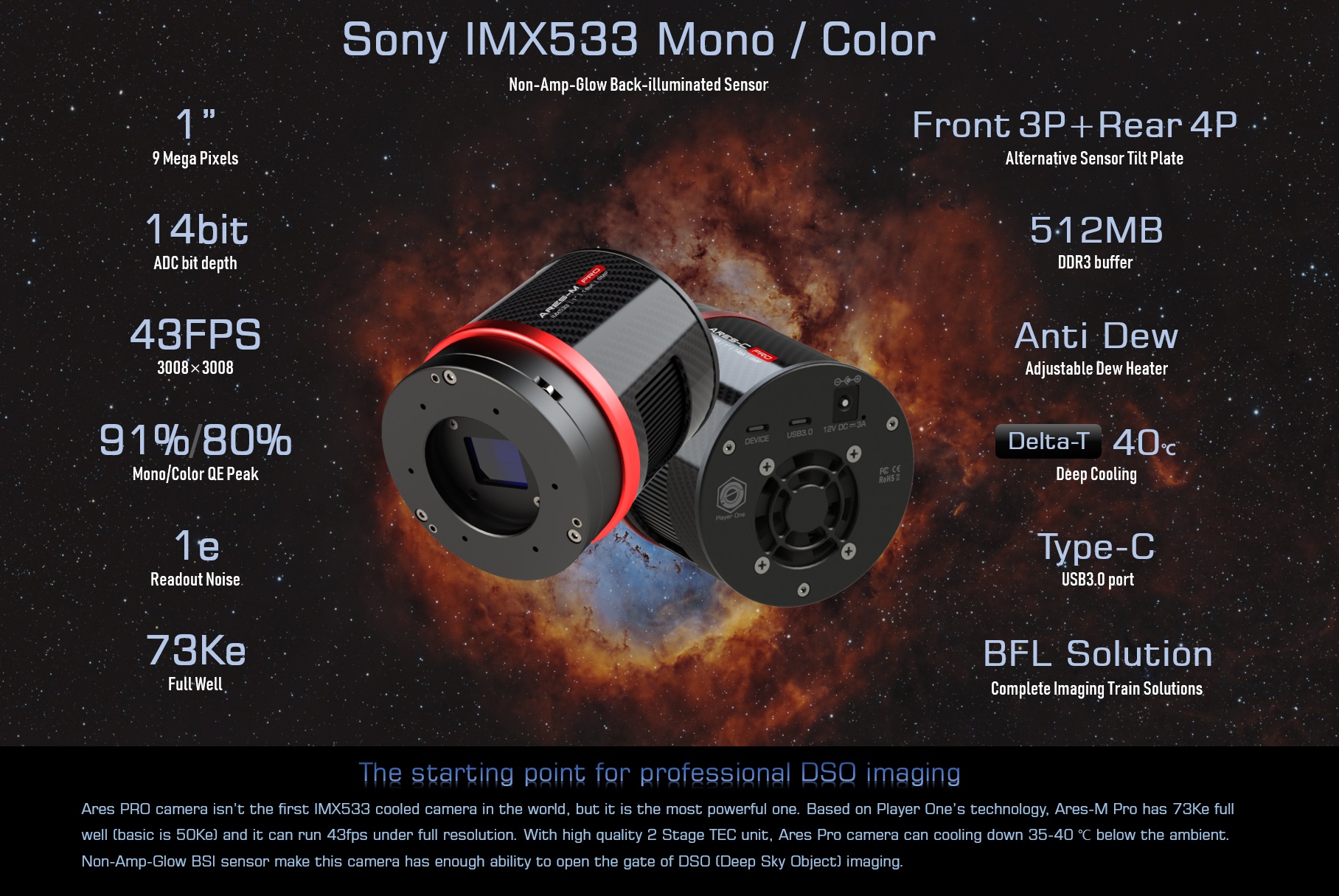
Power supply is not include in camera package, high quality 12V 5A power supply link: https://player-one-astronomy.com/product/12v-5a-power-supply-dc5-5-x-2-1mm/
Drivers and softwares download: http://player-one-astronomy.com/service/software/
Manuals download: http://player-one-astronomy.com/service/manuals/
Ares-C Pro KIT setup tutorial
Unboxing video:
First light experience and Data:
Product Description

Ares-C Pro (IMX533) camera is developed by Player One Astronomy, this camera is not only great for DSO imaging, and also can do solar and lunar imaging too. Ares-C Pro camera, which adopts Sony IMX533 1” square format color sensor. The 3.76um pixel size accommodates a well depth of 73Ke with a total of 9MP (the resolution is 3008*3008), and the diagonal is 16mm.
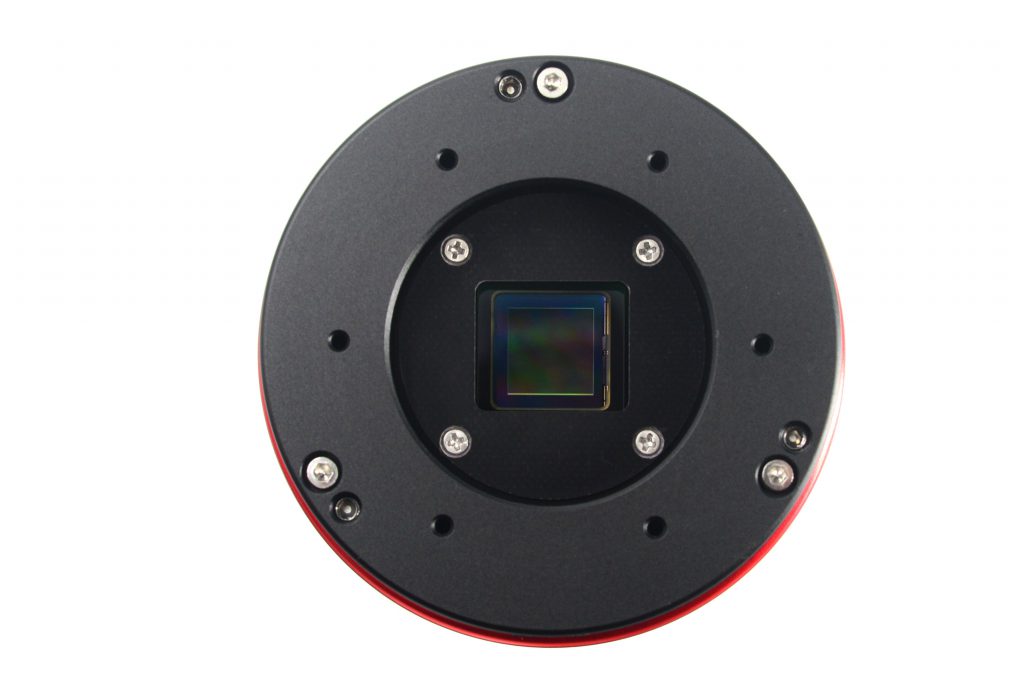
STARVIS Technology
Ares-C Pro (IMX533) camera based on Sony STARVIS technology, it is back-illuminated pixel technology used in CMOS image sensors.
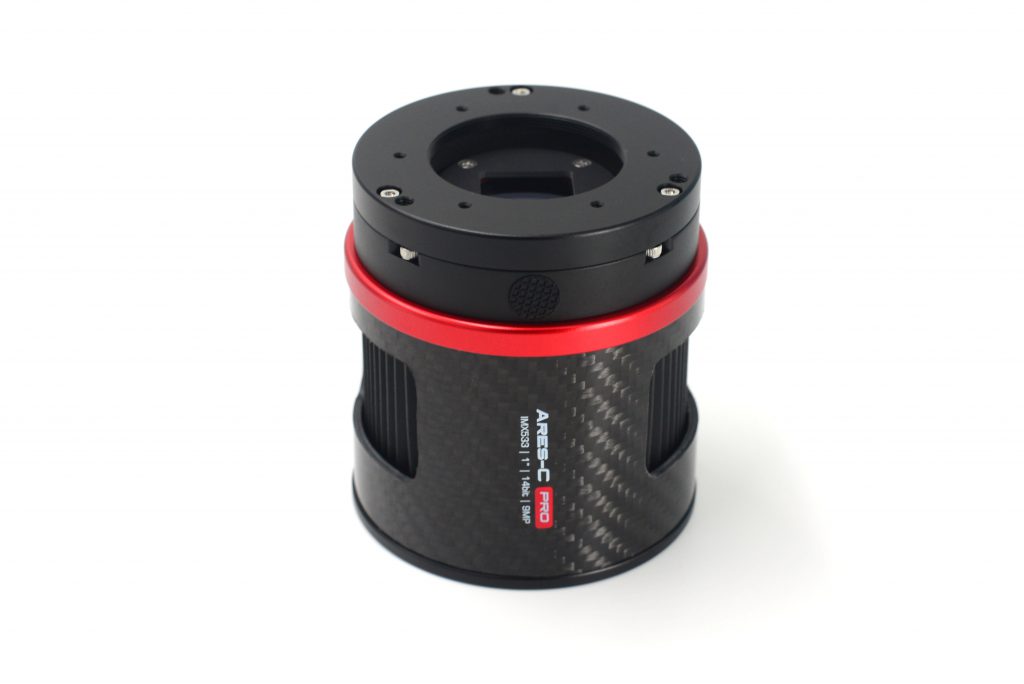
Format
Ares-C Pro camera has 1″ format, this size is quite big for imaging.

Highlights
Cutting-edge Design
The Ares cooled series is starting with a new design! This time with a round body, a classic red and black color scheme, and using carbon fiber to keep weight down and cutting-edge outlook. We also integrated the sensor tilter plate and anti-dew PCB board. This series of designs makes the camera not only light and cool, but also functional!
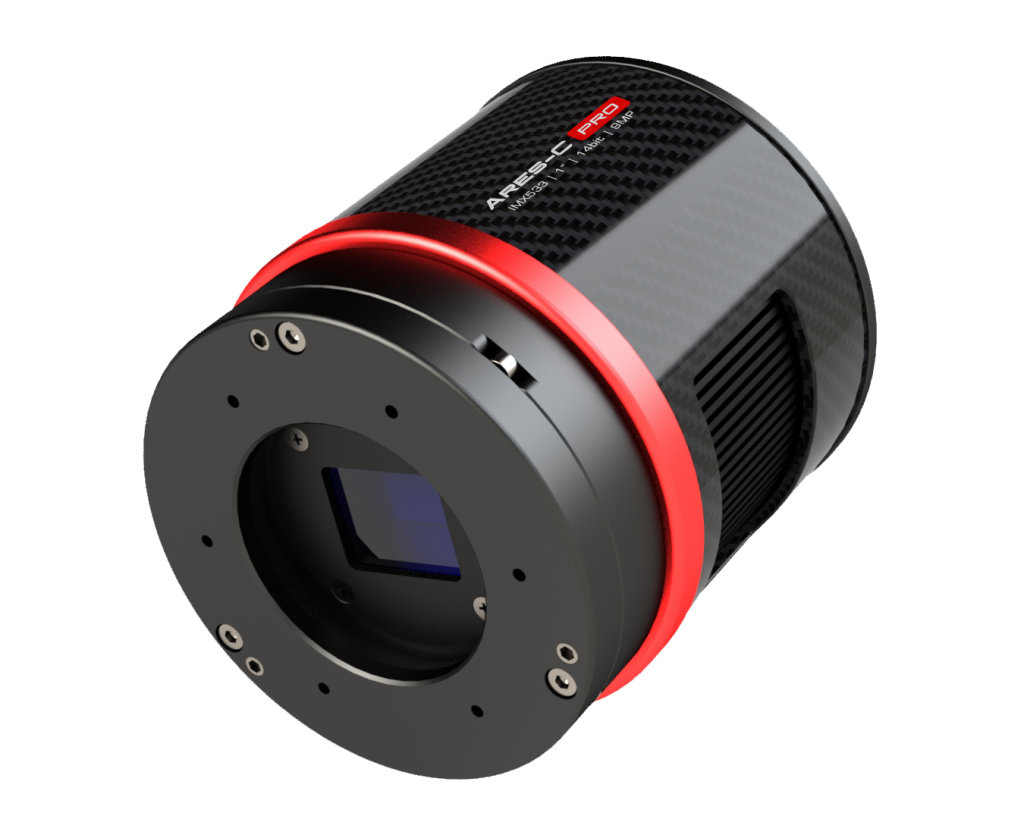
Front 3P and Rear 4P tilter plate
When shooting deep sky objects, the sensor tilt plate can be used to adjust the sensor tilt angle to make the stars at the corners more rounded. Ares camera provide both front and Rear tilter plate fulfill all usage scenarios.
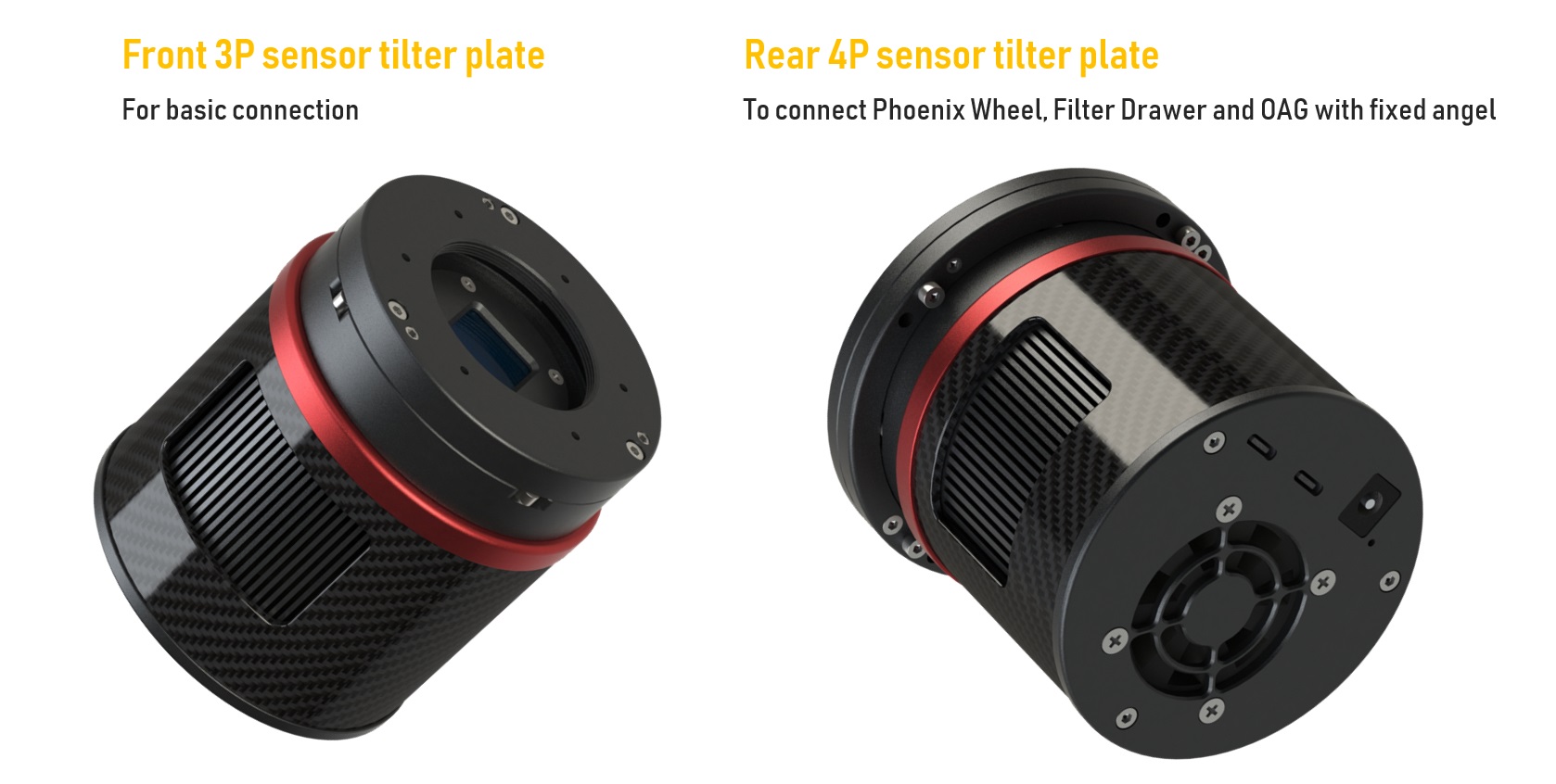
Front 3P tilter plate is the default part on camera, we believe most users has experience with this before. it works well in a lot of basic scenarios.
Rear 4P tilter plate is an alternate part for camera, when use filter wheel/filter drawer and OAG with fixed angel, it is necessary. And it is also convenient for RASA users to adjust the sensor tilt angel.
The built-in high-density sponge shading pad can block the light from the side slits without any side leakage.
Carbon fiber and light weight
The Ares series uses a carbon fiber in camera hausing and has been optimized for weight reduction in its structural design. The camera weighs only 420 grams, making it one of the lightest models on the market.
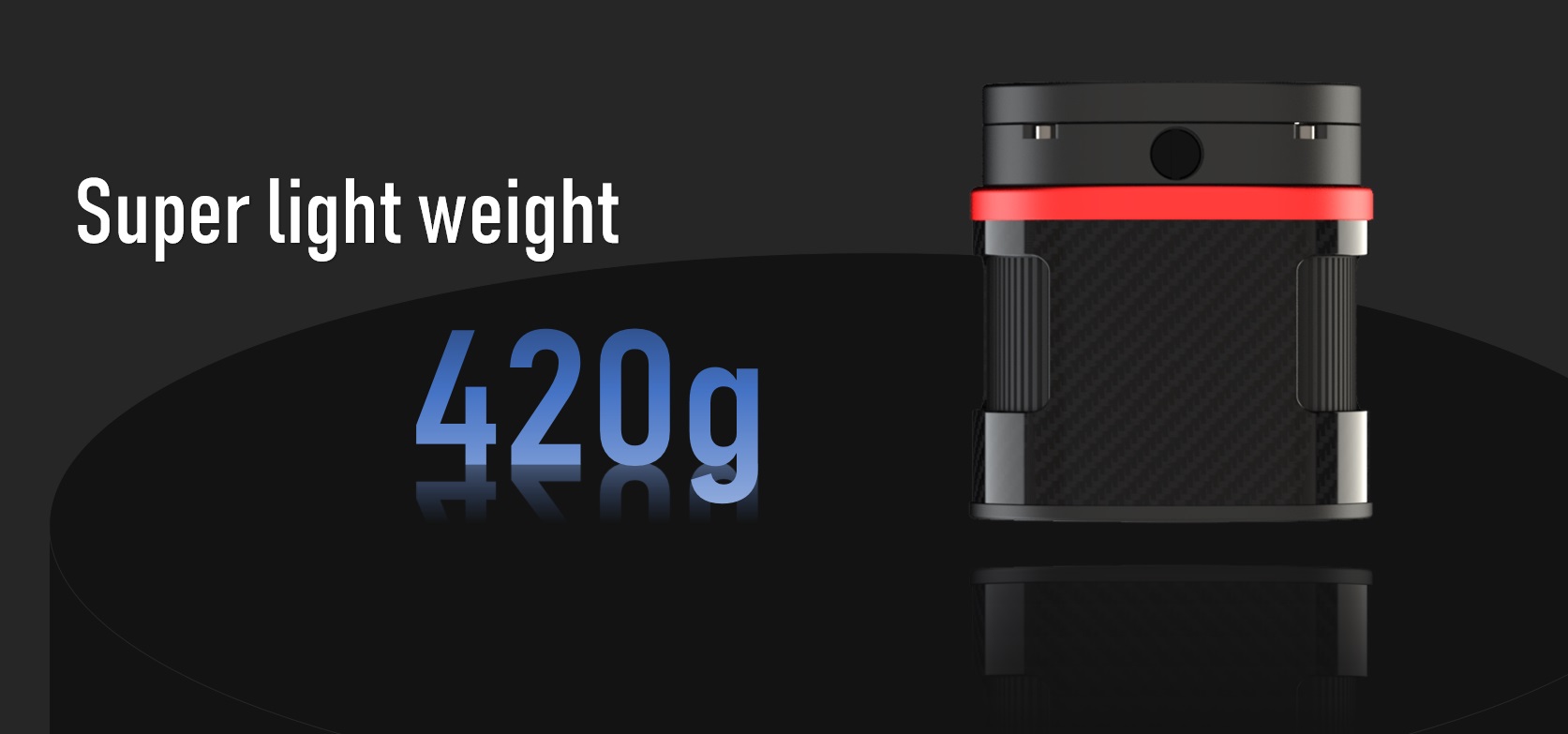
Deep Cooling
Player One cooled camera series use 2 Stage TEC Cooling unit, after improved the structure design to reject the heat back to camera chamber, Camera Delta-T can reach 35-40℃.
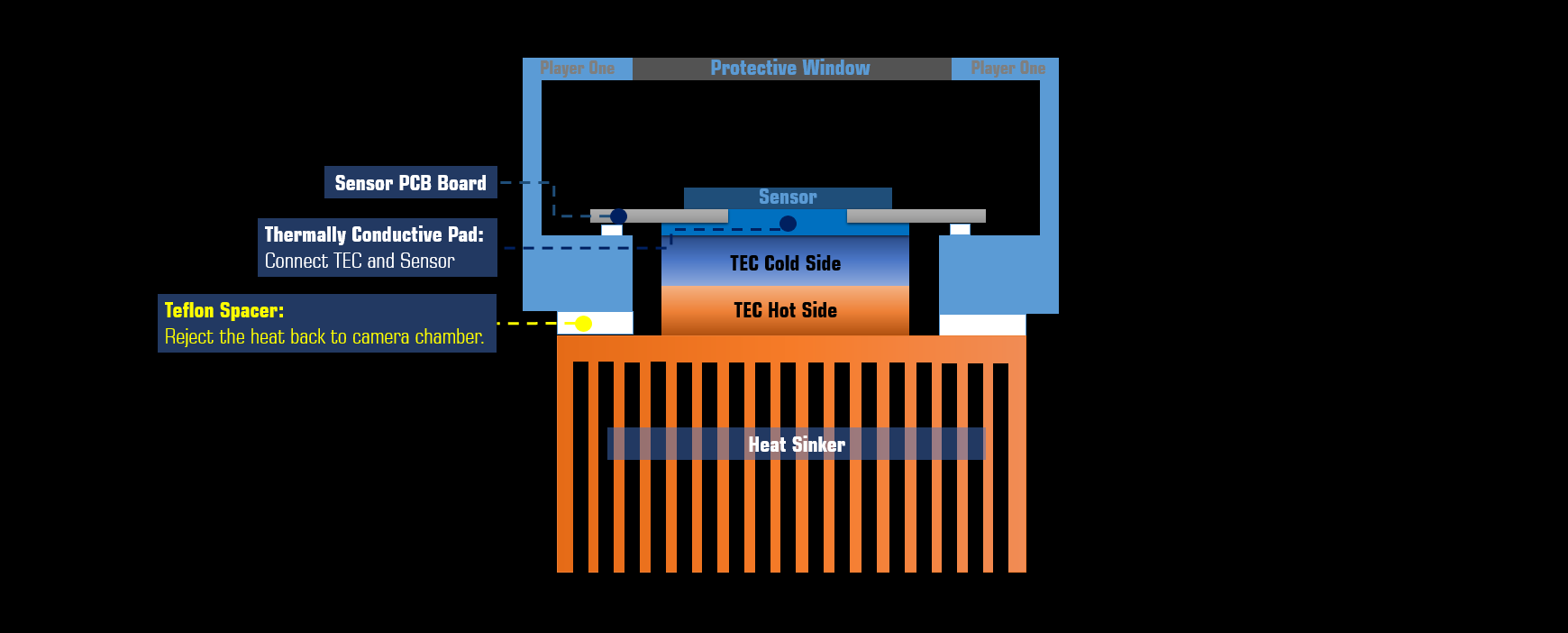
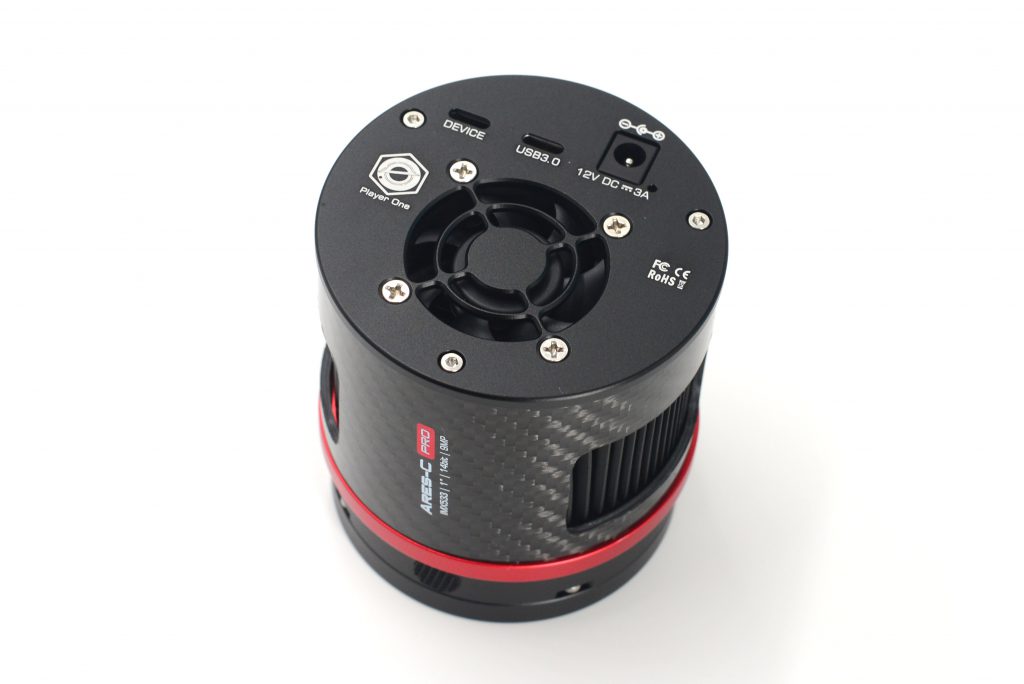
Anti-Dew heater
In the design of lightweight cooled cameras, Player One still pursuing the perfection, any necessary features must have, especially anti-dew system, is the problem that a lot of small cooled cameras ignored.
Full well
Ares-C Pro camera has 73Ke full well, it’s almost 1.5 times than IMX533 Basic (50ke).
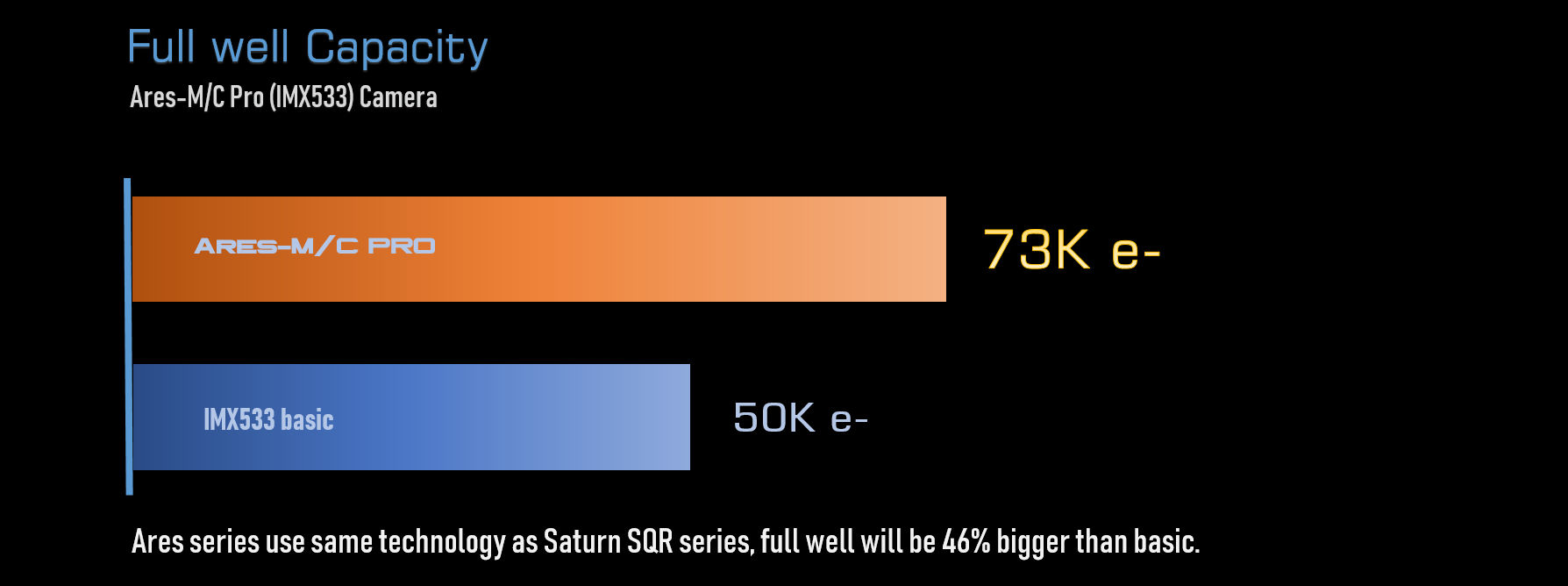
Frame rate
Ares-C Pro camera can run 43FPS under RAW8 mode, that’s much faster than existing models on market.
Dual Sampling Mode
Ares series has dual sampling mode. Normal mode and LRN mode, they has different advantages in imaging.
1. Normal mode has faster FPS, it is more suitable for planetary imaging.
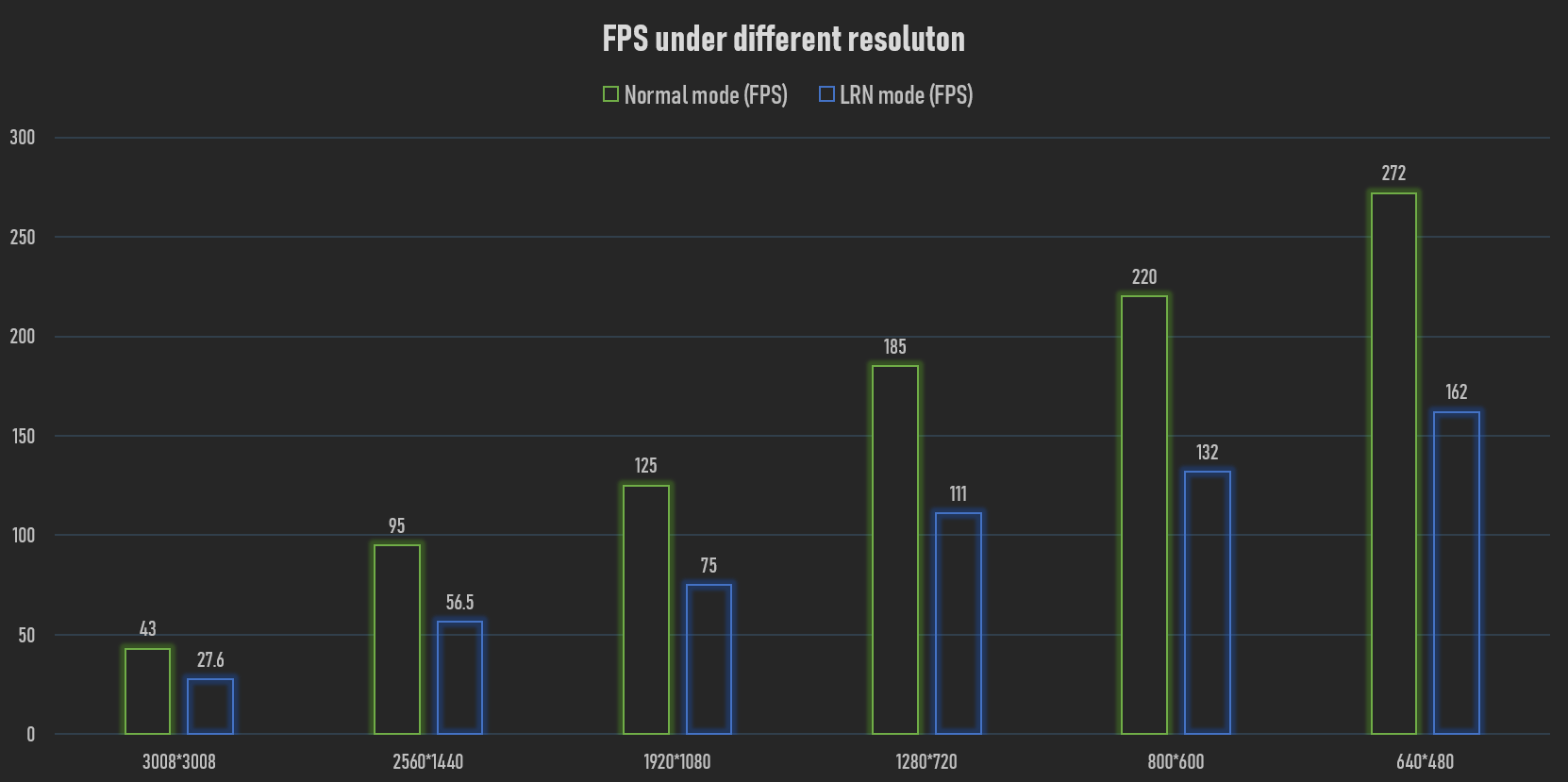
2. LRN (low readout noise) mode has lower readout noise and higher dynamic range. it is more suitable for DSO imaging.
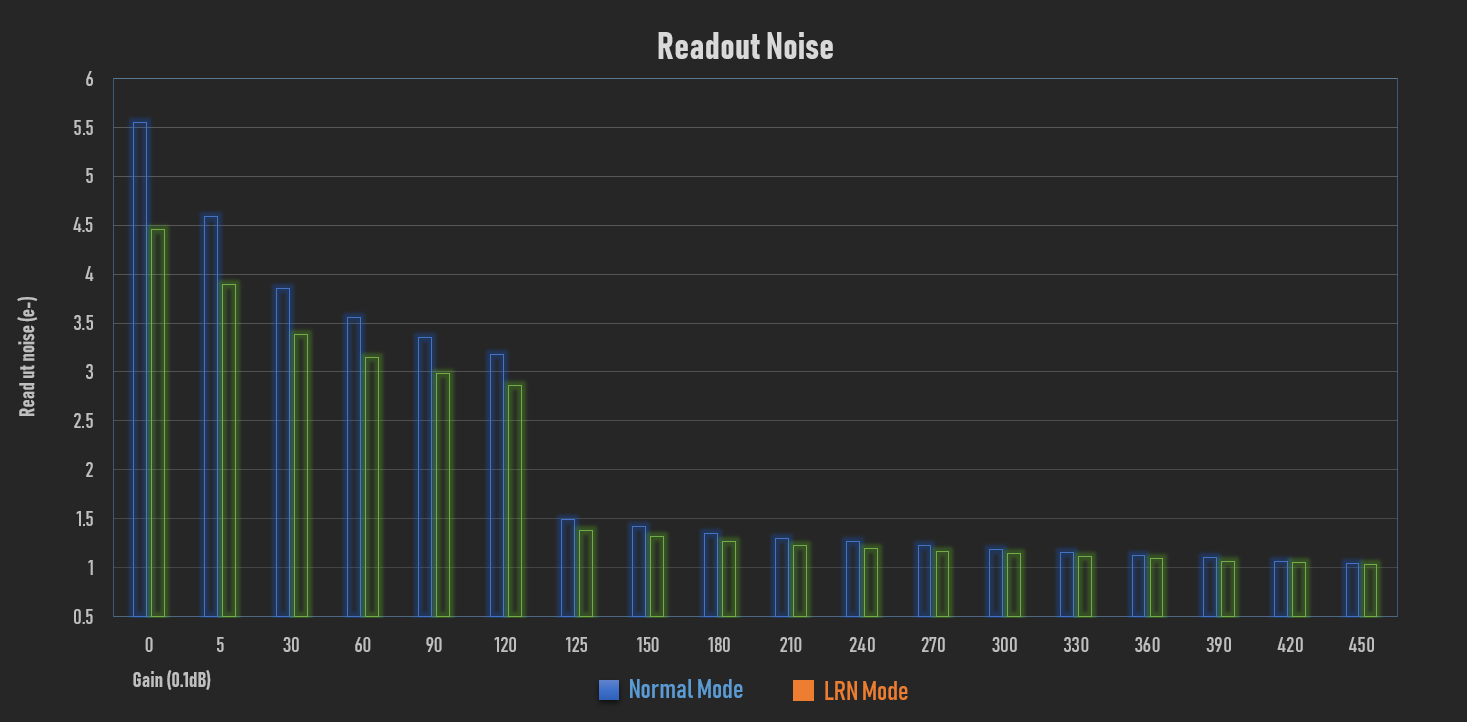
Non-Amp-Glow
Dark frame of Ares-C PRO (IMX533) camera is totally “dark”, it is also “Non-Amp-Glow” camera too!
300s@gain=0, offset=10, -10 degree, Dark frame of Ares-C PRO camera: DOWNLOAD

Preview of Dark frame: Exposure=300s, gain=0, offset=10, temp=-10℃ STF auto-Stretch in Pixinsight 1.86
Non-Amp-Glow can give us very clean background, much easier to get high quaility images.
Ares-C PRO camera also very good for solar, lunar and planetary imaging. Its 1″ square sensor can easily capture full disk of the Sun and Moon with short focal refractors. And it also could make mosaic work more efficient.
512MB DDR3 Cache
As an improvement, DDR3 cache in cooled cameras are increased to 512MB. It helps stabilize and secure data transmission, it effectively avoids frame dropping and greatly reduces readout noise.
With the DDR3 cache, the camera does not have high demands on computing needs any longer, it will still has excellent performance even if it is connected to a USB 2.0 port.
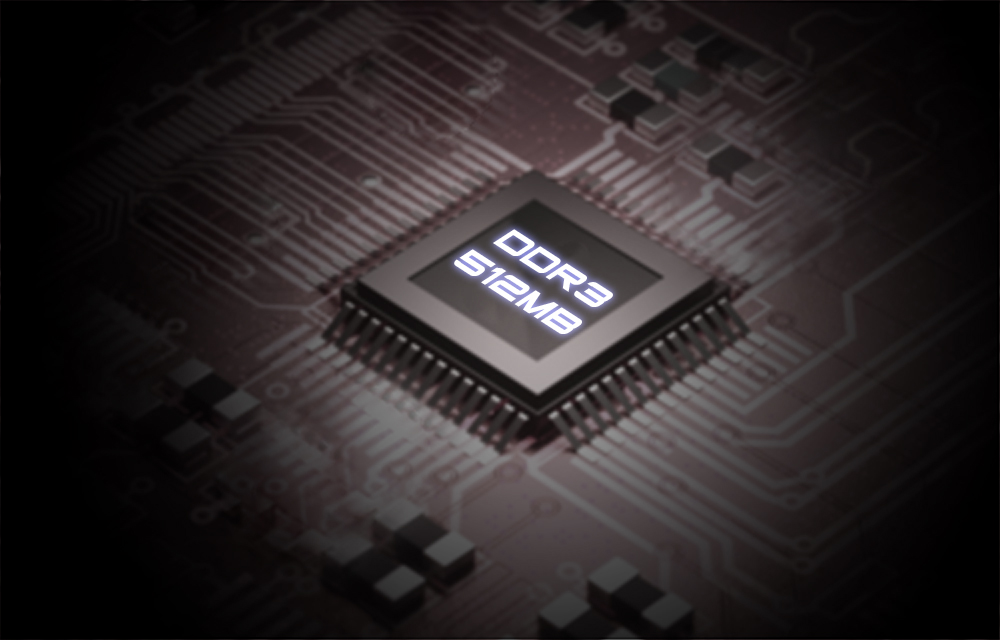
Type-C Data port and Power port
Back piece of cooled camera has 2 Type-C data port and 12V DC 5.5×2.1mm power port.
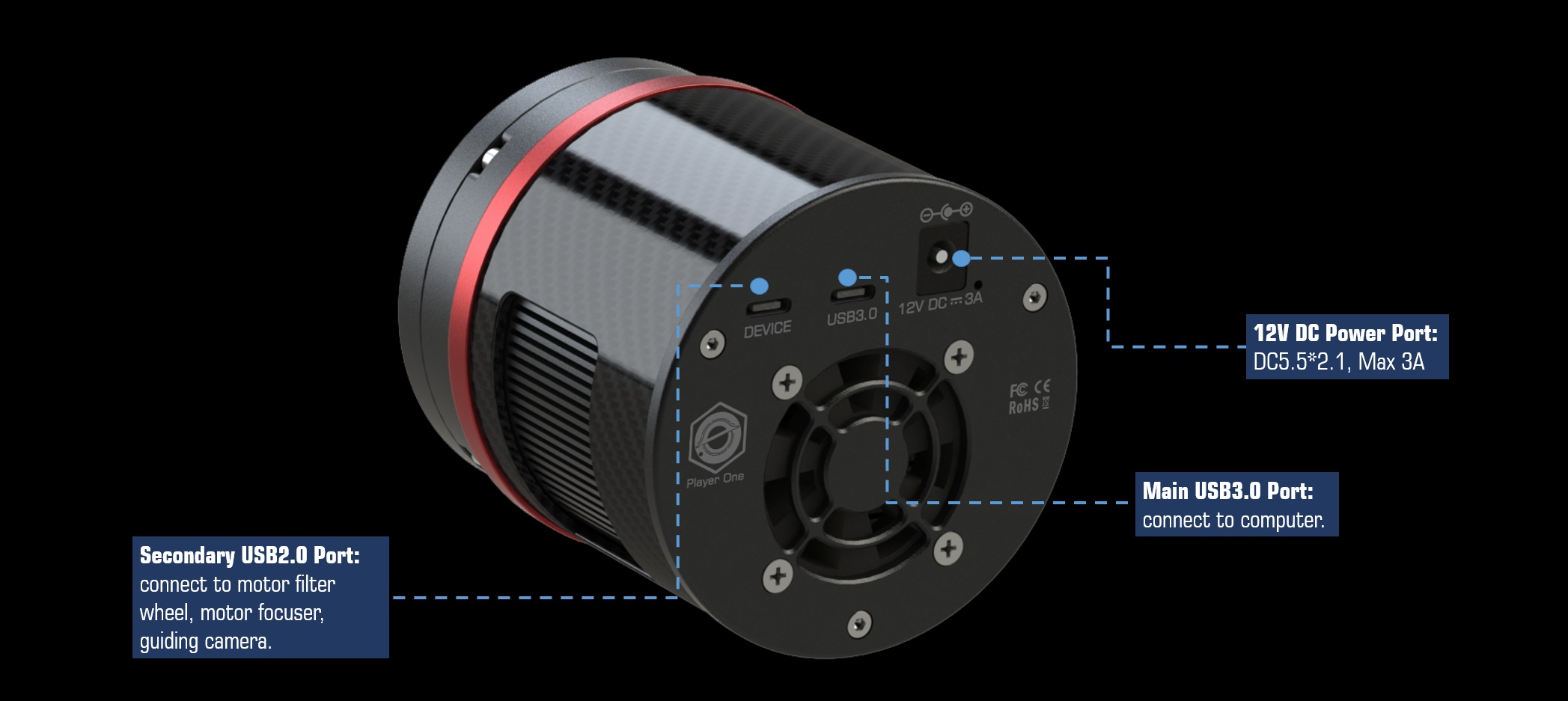
Main data port support USB3.0 protocol, the camera can run 43fps under RAW8 mode. Type-C port is easier to plug in when assemble the imaging equipment in night.
When recording images, since the actual writing speed will be affected by the writing speed of the hard disk itself, when the hard disk writing speed is slow, the recording may not reach the theoretical speed. It is recommended that you use a high-quality solid state drive to record data to give full play to the performance of the camera.
The camera has 12V DC5.5*2.1mm port to provide enough power to TEC cooling system. If you don’t need to power up cooling, only need to connect the main Type-C port, the camera will works as a uncooled camera.
Standard Cable Usage
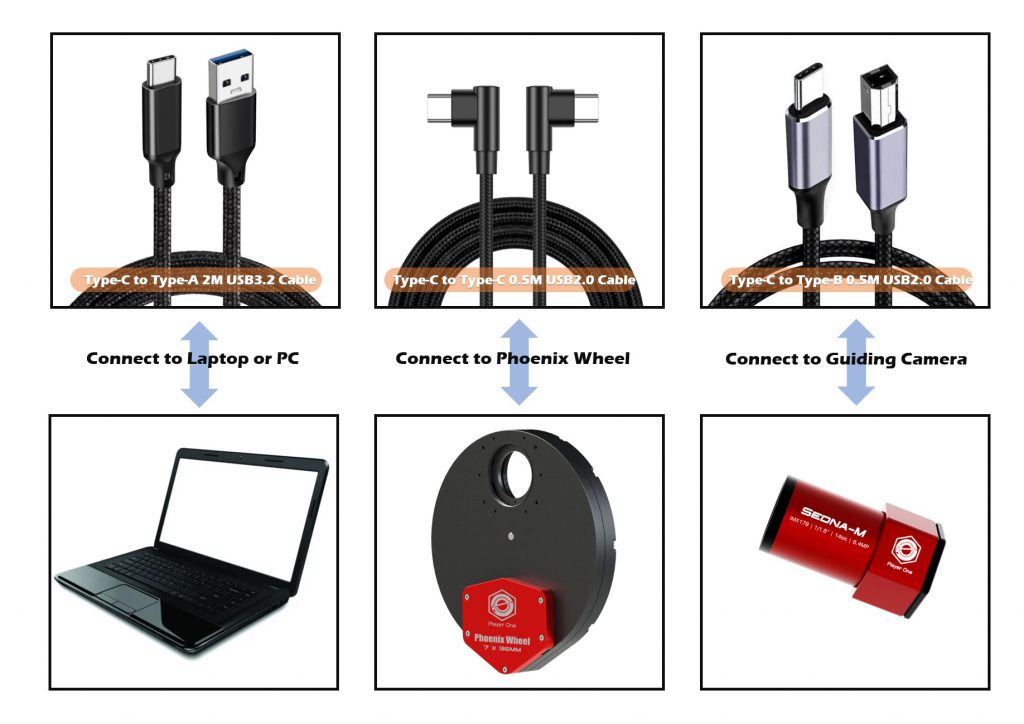
Cooling System and Anti-Dew Heater
In ASCOM window, we provide 3 adjustable parameters: Target temperature, Fan Speed and Anti-Dew power.
Standard Delta-T: 35℃-40℃, when ambient temp 30℃, fan speed 100%, dew heater 1%.
Recommend Delta-T settings: 30℃-35℃ below ambient, fan speed 50-70%, dew heater 10%, power consumption 40- 60%.
The rotation speed of cooling fan is also adjustable, the default value is 50% speed.
Dew problem is the biggest enemy in astro imaging, the camera integrated anti-dew heater in front of the camera. The heat power is adjustable.
Overvoltage and overcurrent protection mechanism
Player One cameras produced by the number one player ensures the safety of your camera and other equipment through overvoltage and overcurrent protection mechanisms.
Performance
HCG open at gain=125.
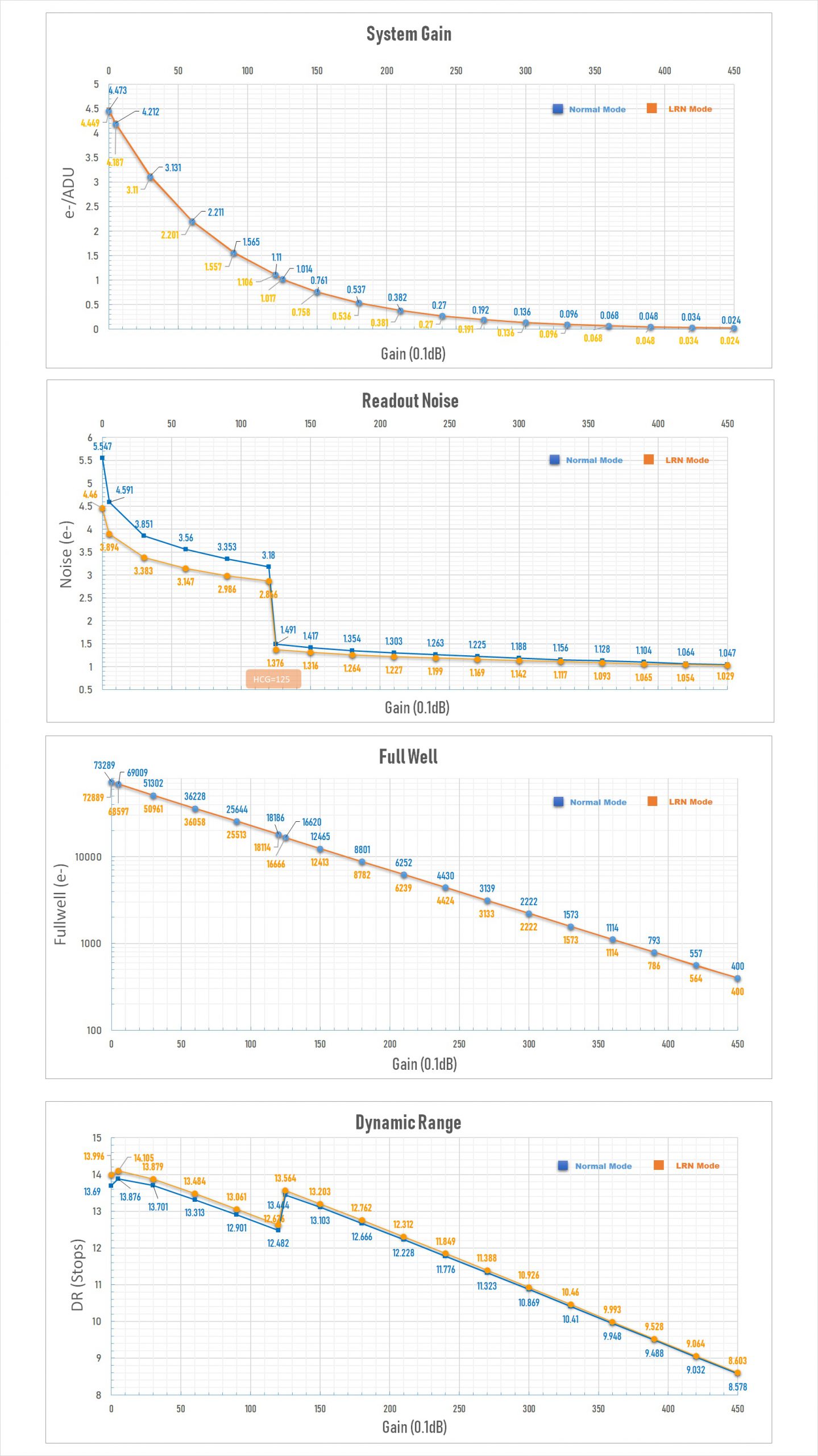
Readout Noise
Regarding readout noise, we solemnly promise that all values are obtained from actual tests. And for users, you could use Sharpcap 4 for testing. SC4 has a function called Sensor Analysis, provide a very simple way to test readout noise.
We wrote a tutorial on our website: https://player-one-astronomy.com/service/manuals/
If you are interested in readout noise testing, you may try it yourself, which is very simple.
Dark current
The dark current is only 0.000044 e/s/pix at -20℃, and 0.000996e/s/pix at 0℃. In entire curve, dark current is almost like a straight a line, which can prove that Ares camera has very good quality and stable performance.
Relative QE Curve
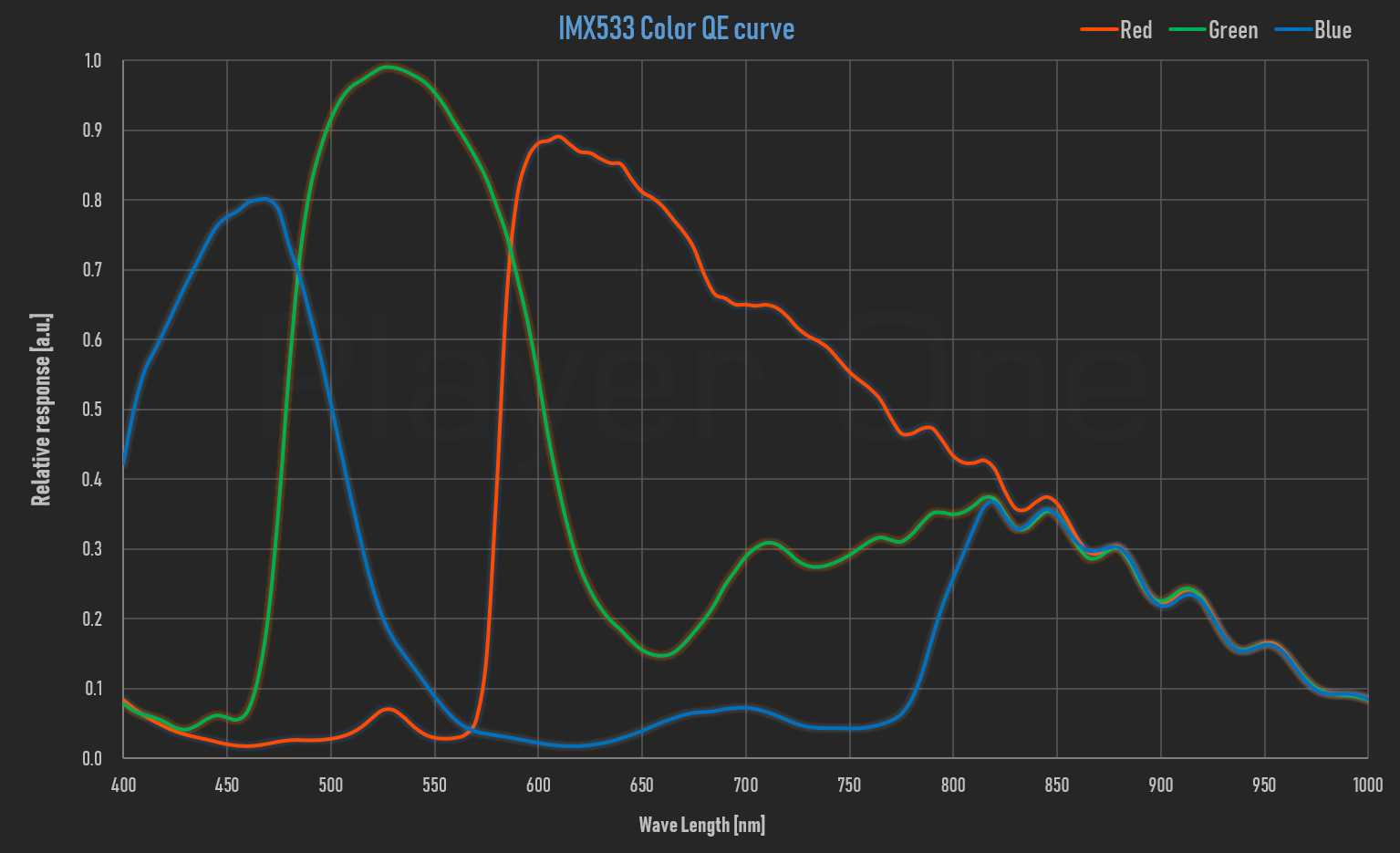
Mechanical Drawing
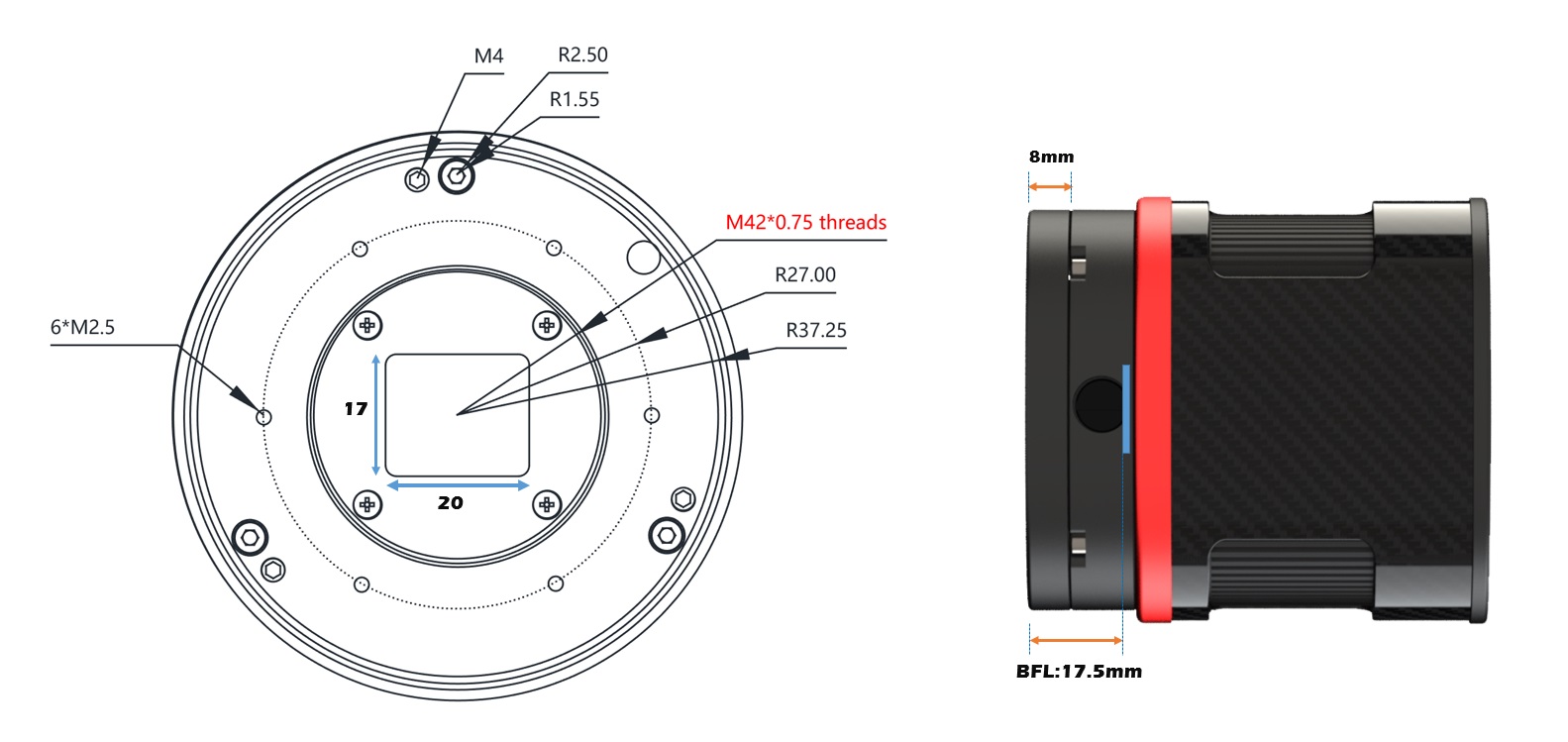
BFL Solutions
Following is some recommend 55mm BFL solution for this camera. If don’t consider about BFL, the connection way is various.
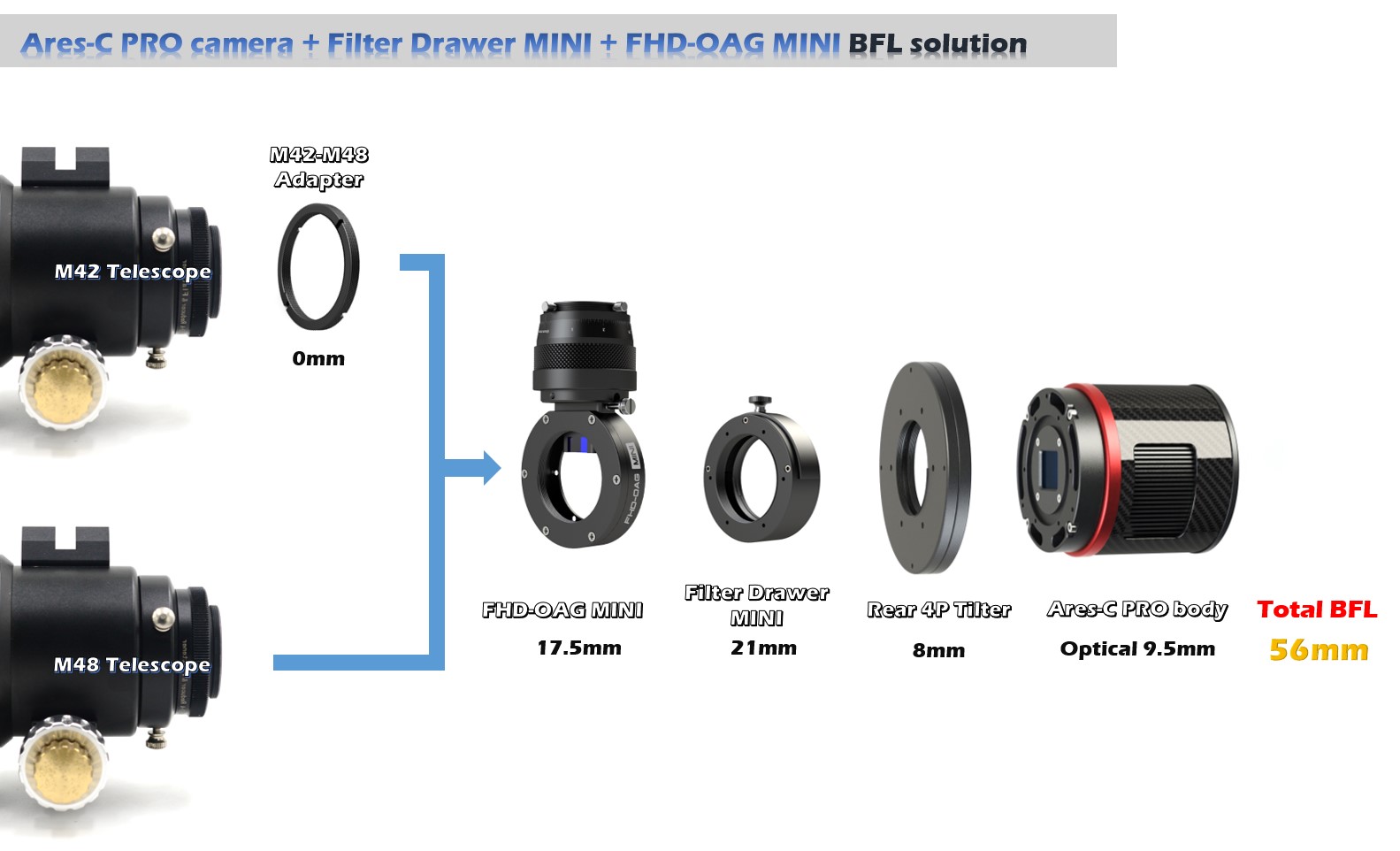
Notice: Some BFL solution is 56mm (Compensate light path differences which caused by filters)
Package List
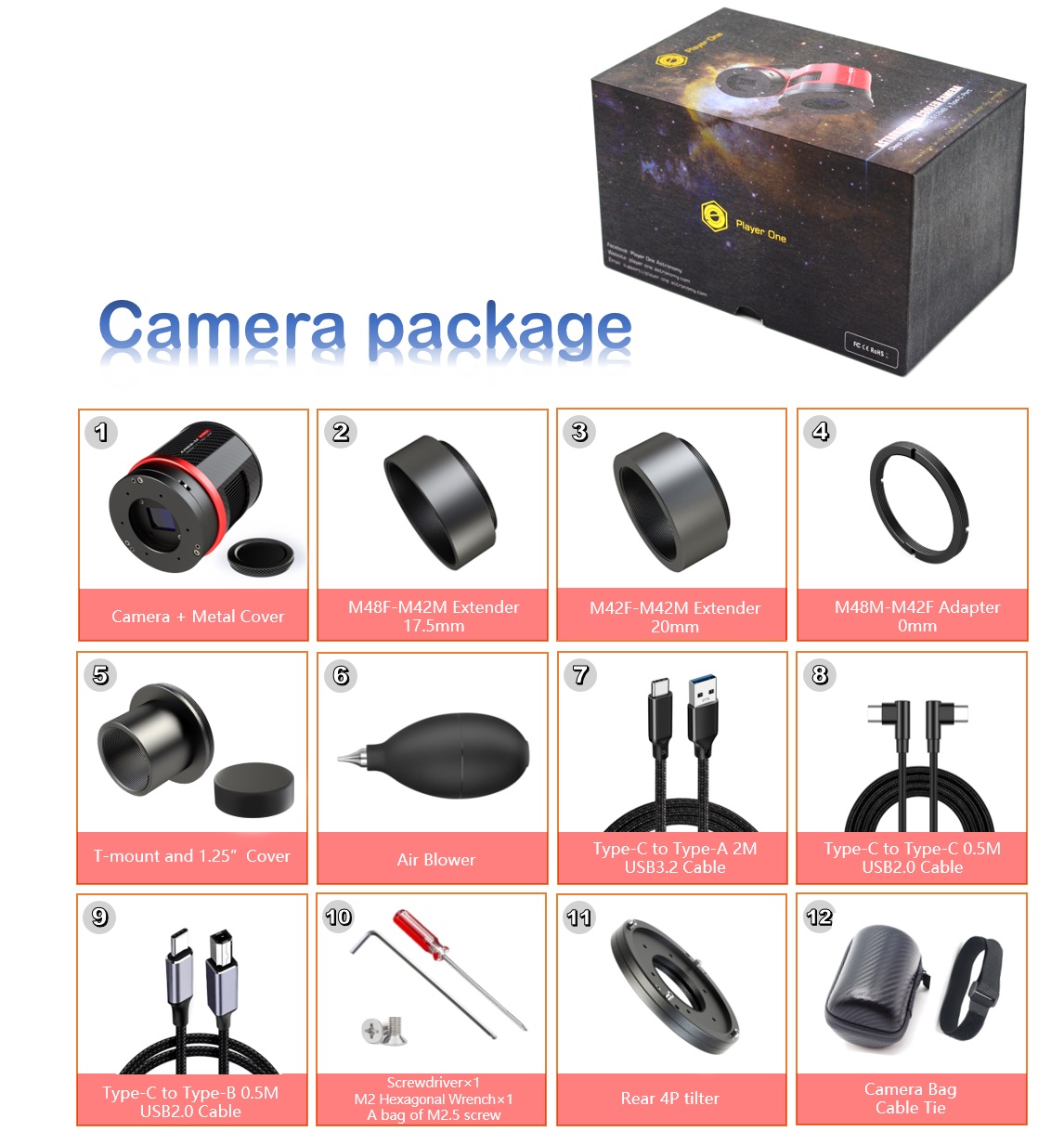
Highlight
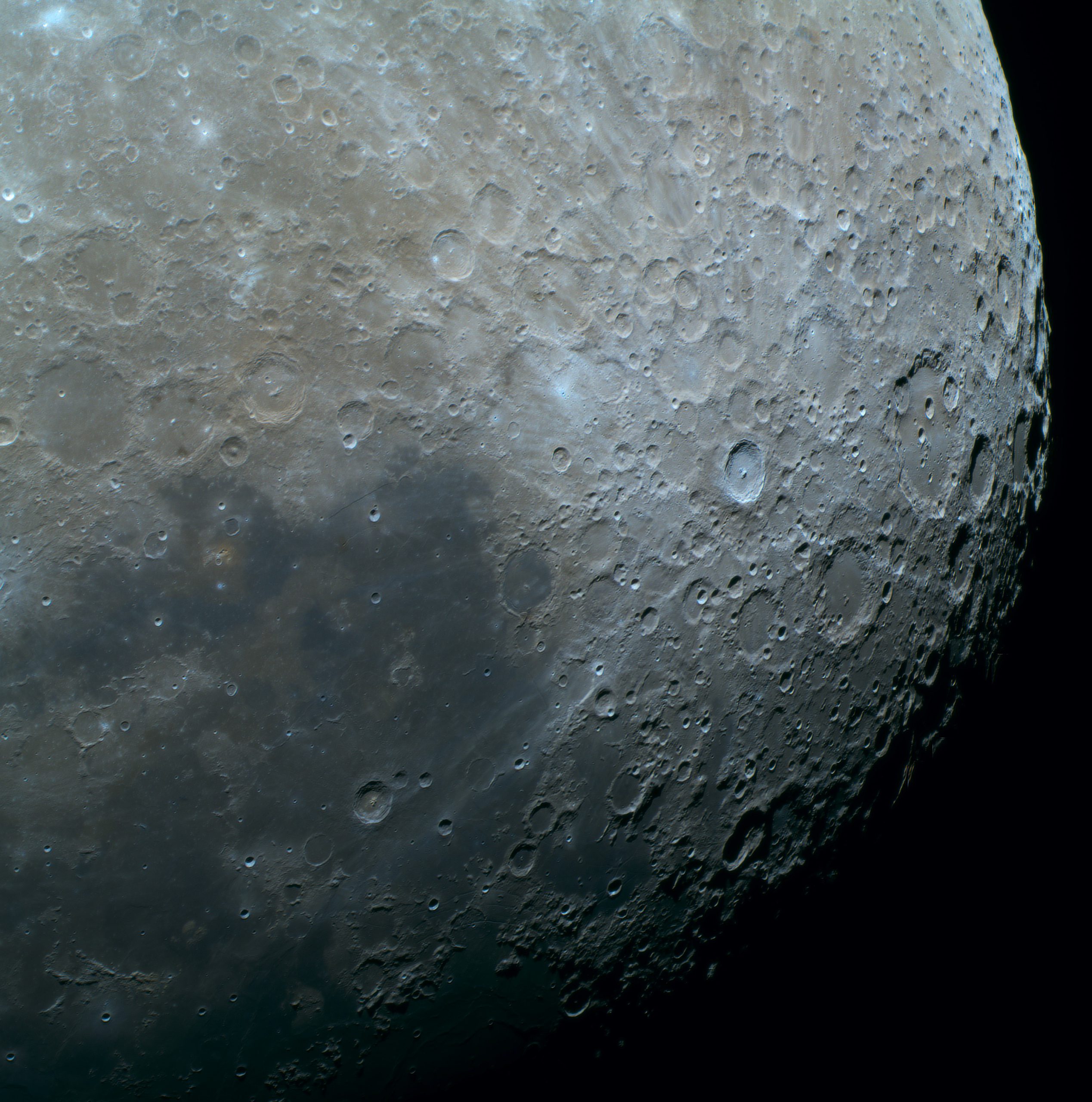
Tycho and Friends by Richard S. Wright Jr.
Imaging Telescopes Or Lenses: Skymax 180
Imaging Cameras: Player One Ares-C Pro
Mounts:Software Bisque Paramount MX+ GEM
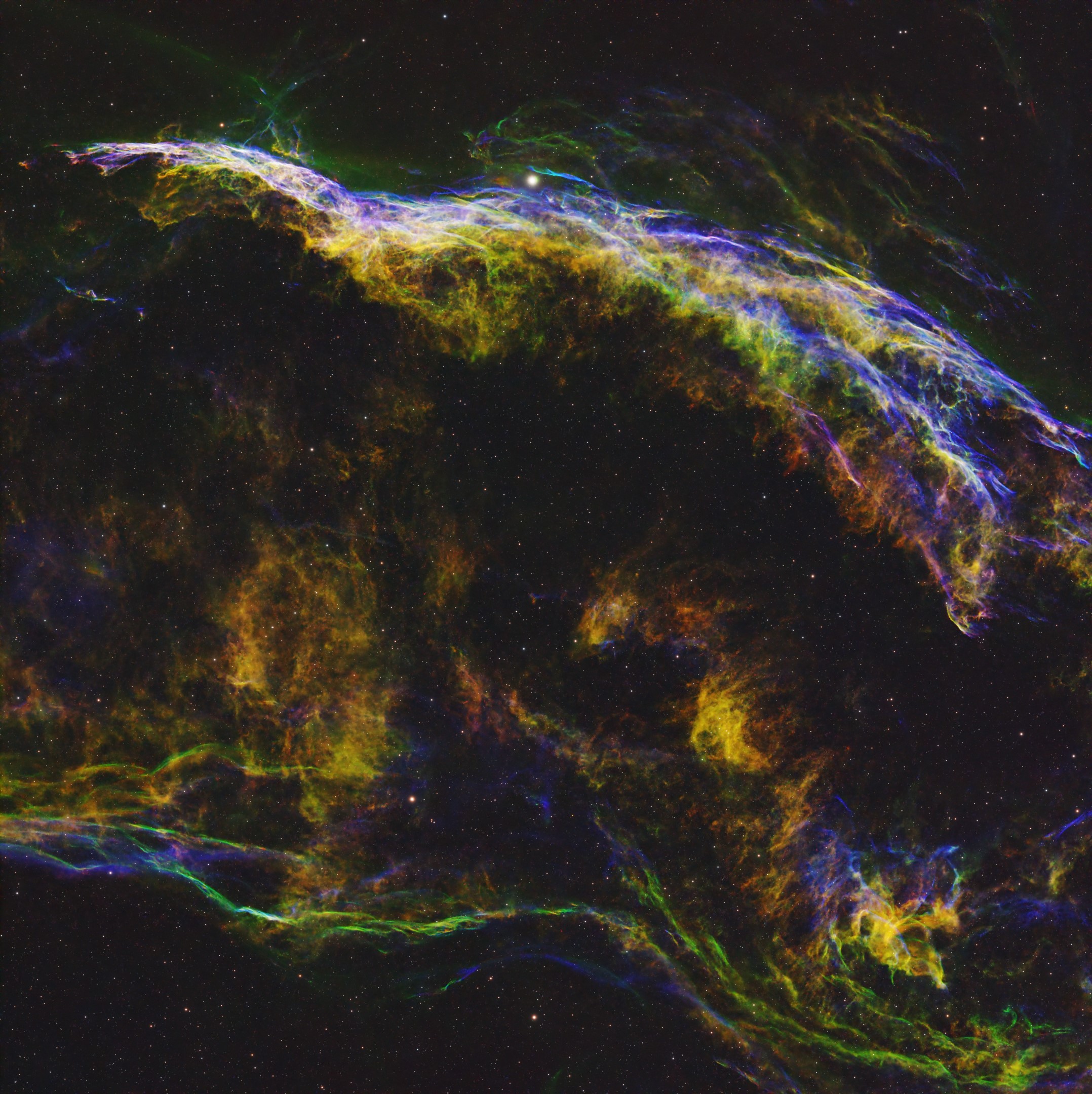
Western Veil Nebula in SHO by John Kavanagh
Imaging Telescopes Or Lenses: Askar 103APO
Imaging Cameras: Player One Ares-C Pro
Mounts:Sky-watcher EQ6-R Pro
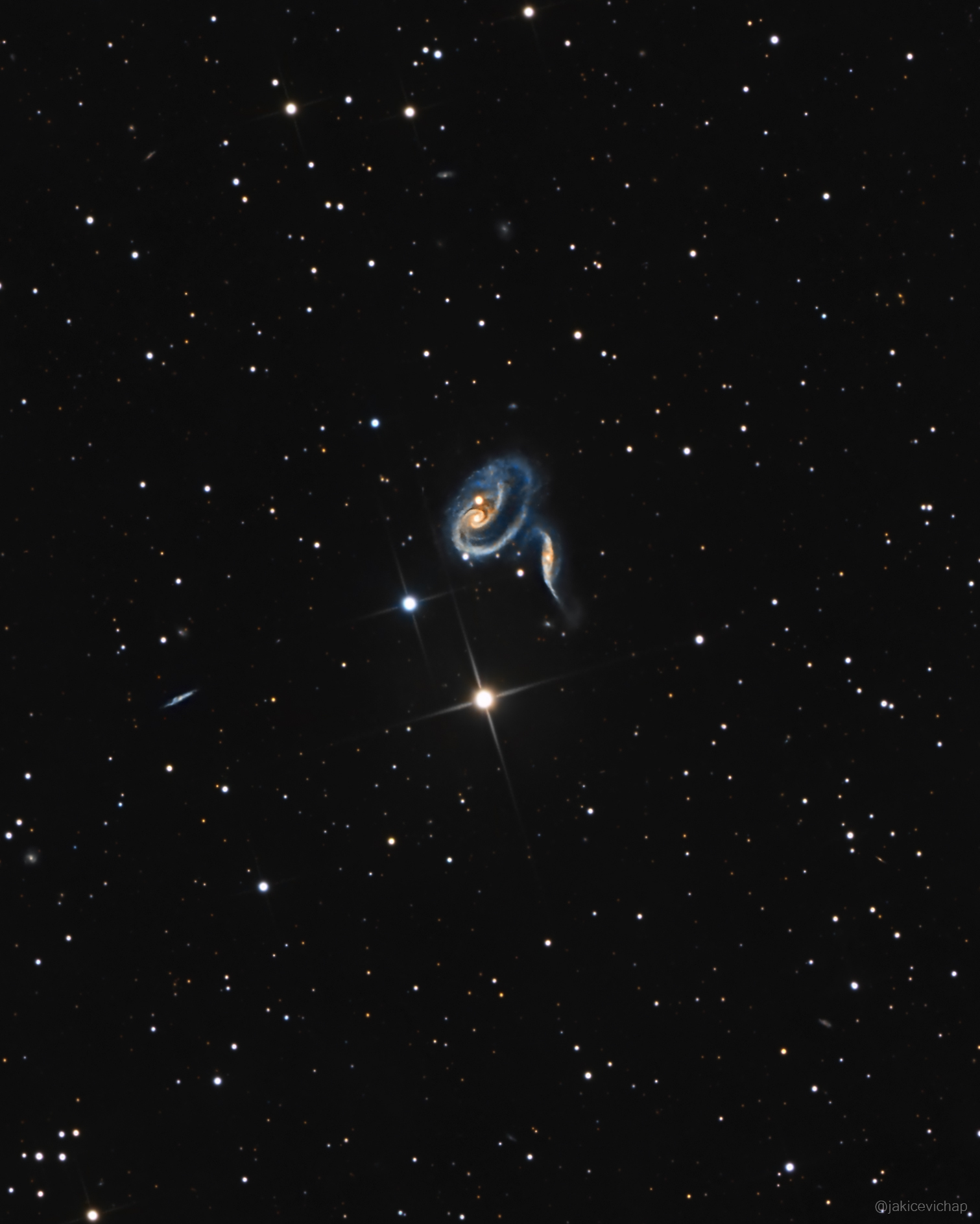
ARP273 – The Cosmic Rose by Matija Jakičević
Imaging Telescopes Or Lenses: Sky-watcher Explorer 250PDS
Imaging Cameras: Player One Ares-C Pro
Mounts:Saxon NEQ6-R Pro
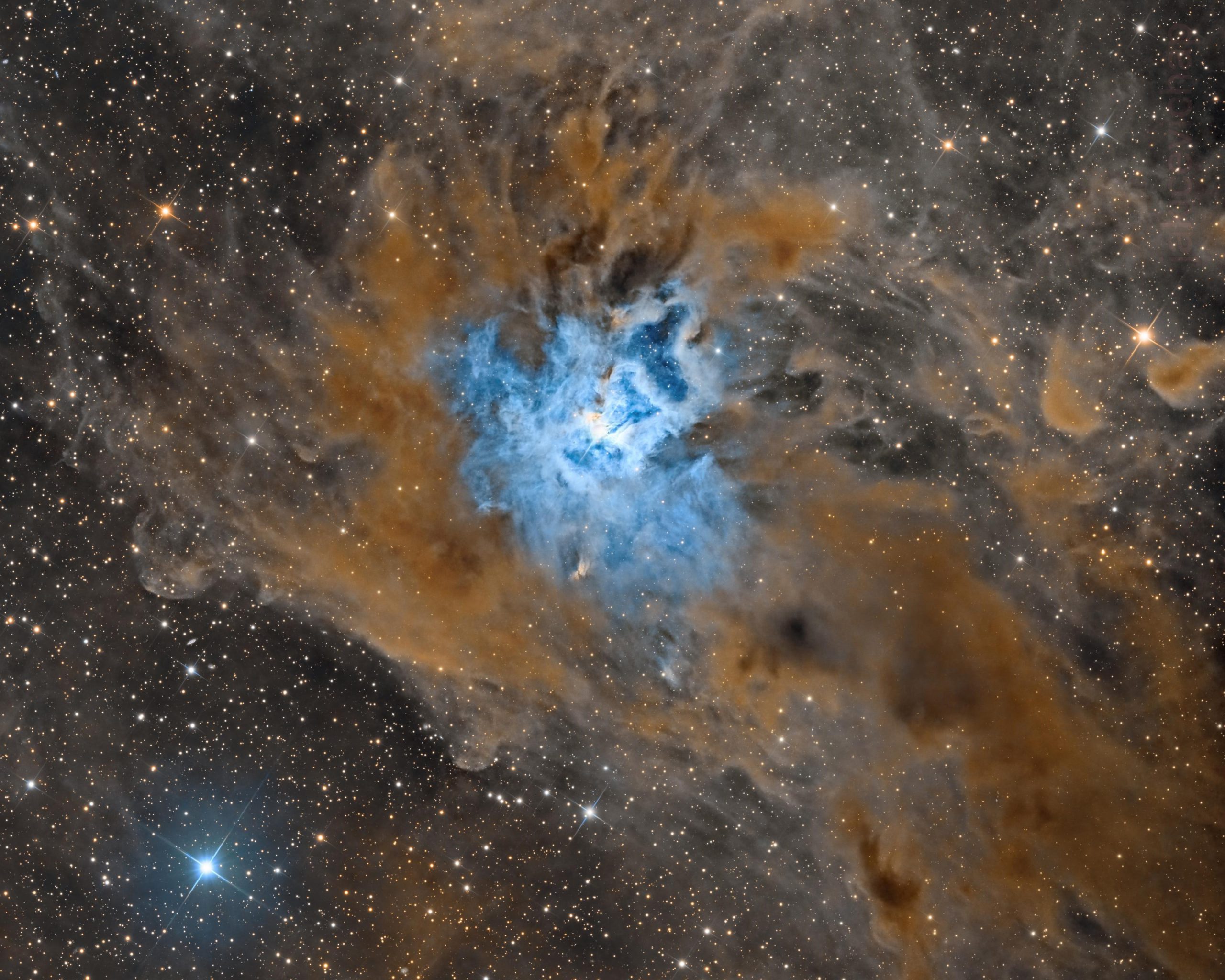
The Iris nebula by Matija Jakičević
Imaging Telescopes Or Lenses: Sky-watcher Quattro 150P
Imaging Cameras: Player One Ares-C Pro
Mounts:Sky-watcher NEQ6-R Pro
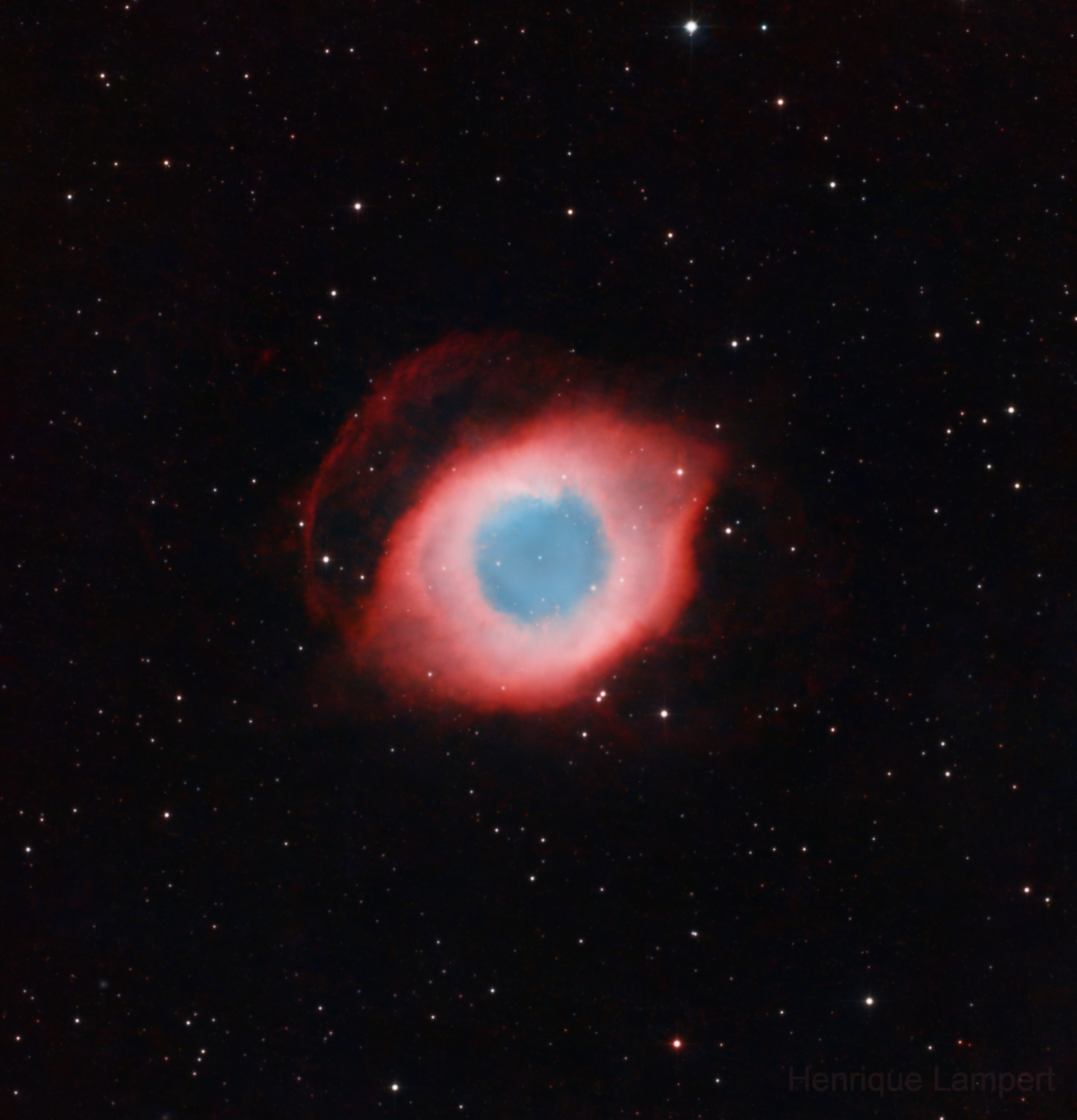
Helix Nebula (NGC 7293)by Henrique Lampert
Imaging Telescopes Or Lenses:Celestron AstroMaster 130EQ
Imaging Cameras: Player One Ares-C Pro
Mounts:Vixen GP2
-白底-small100-200x78.jpg)

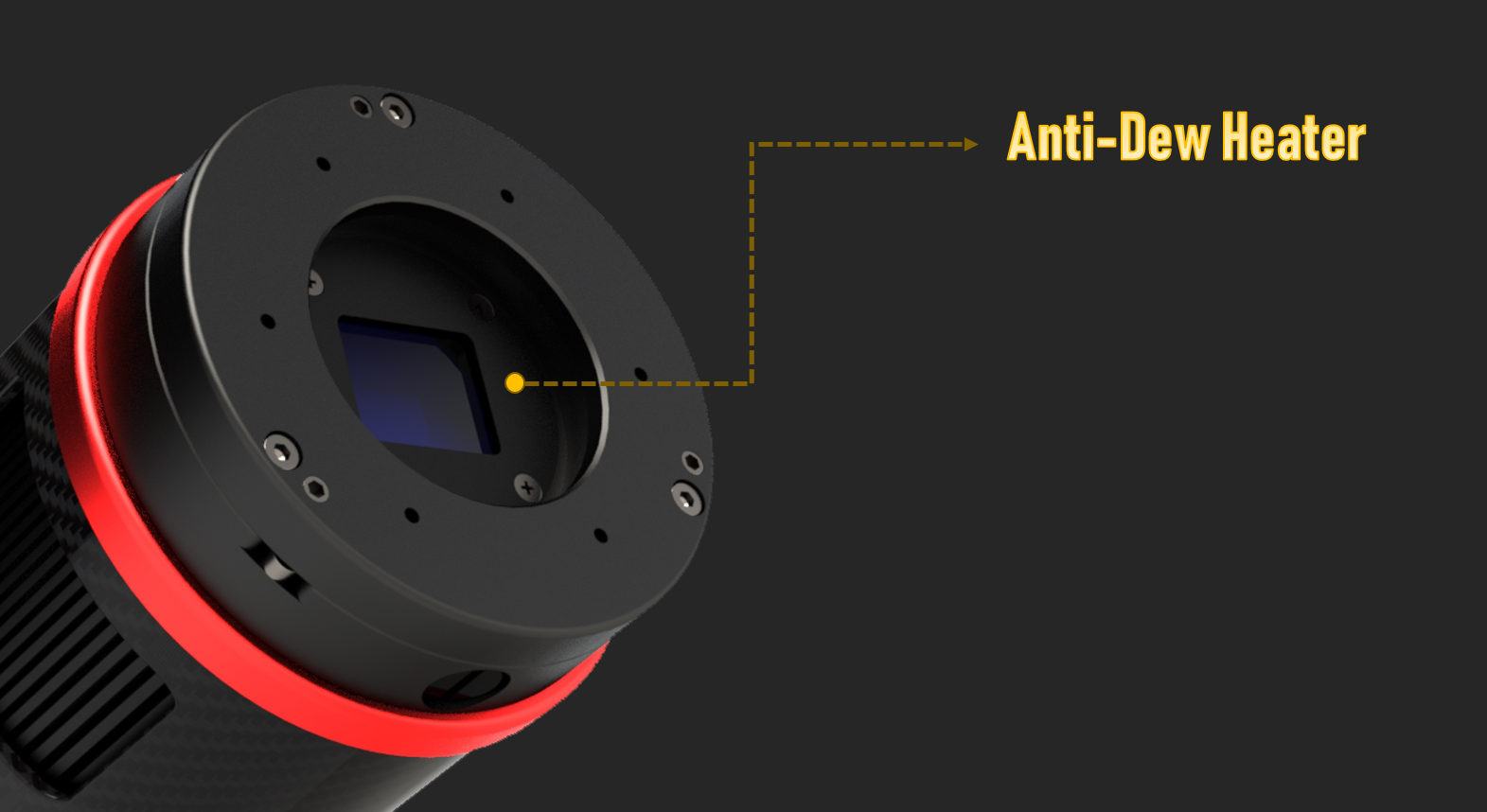

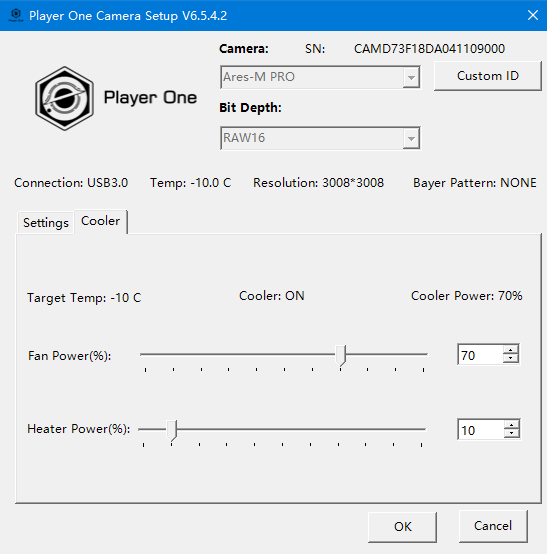

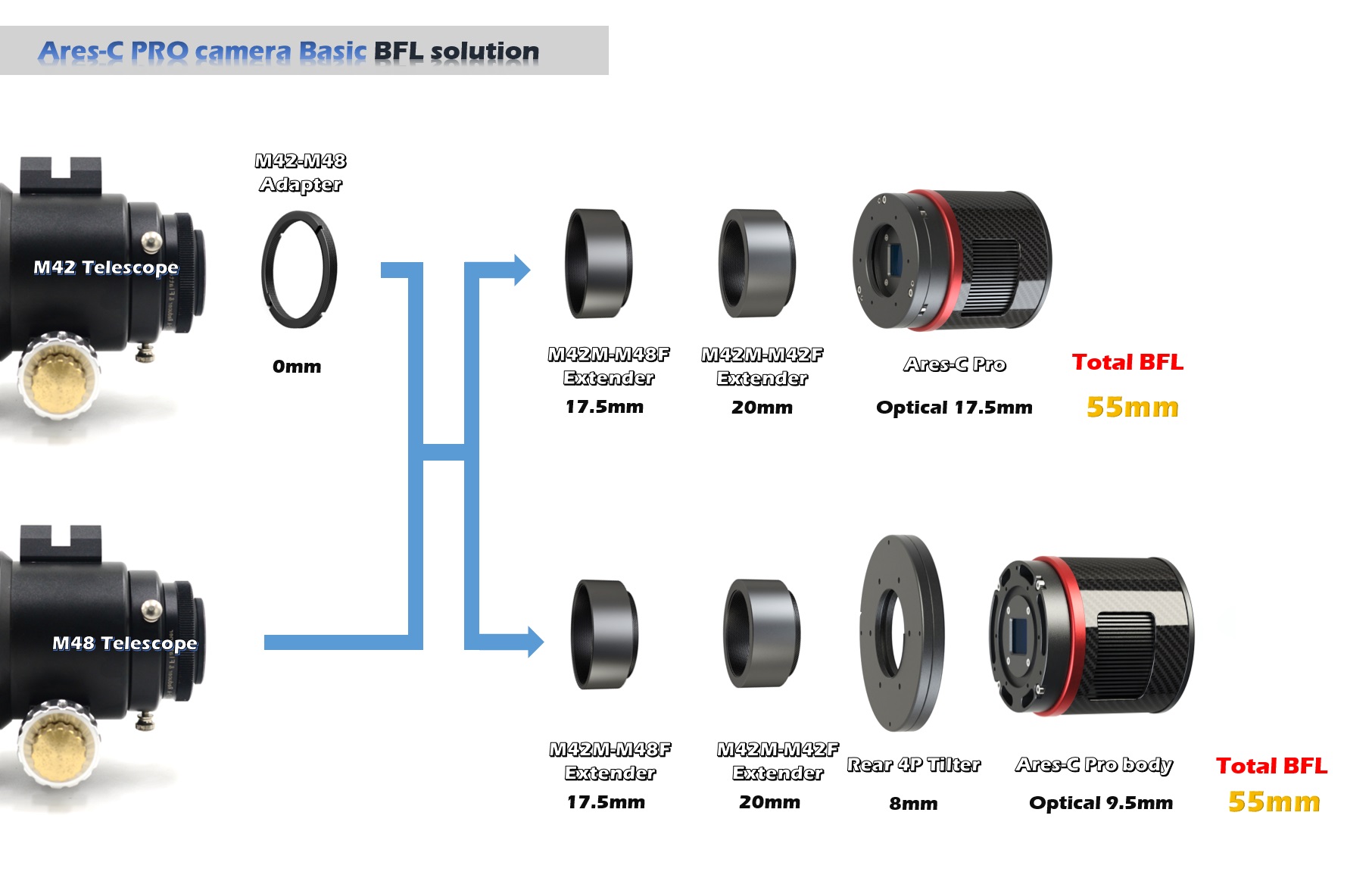
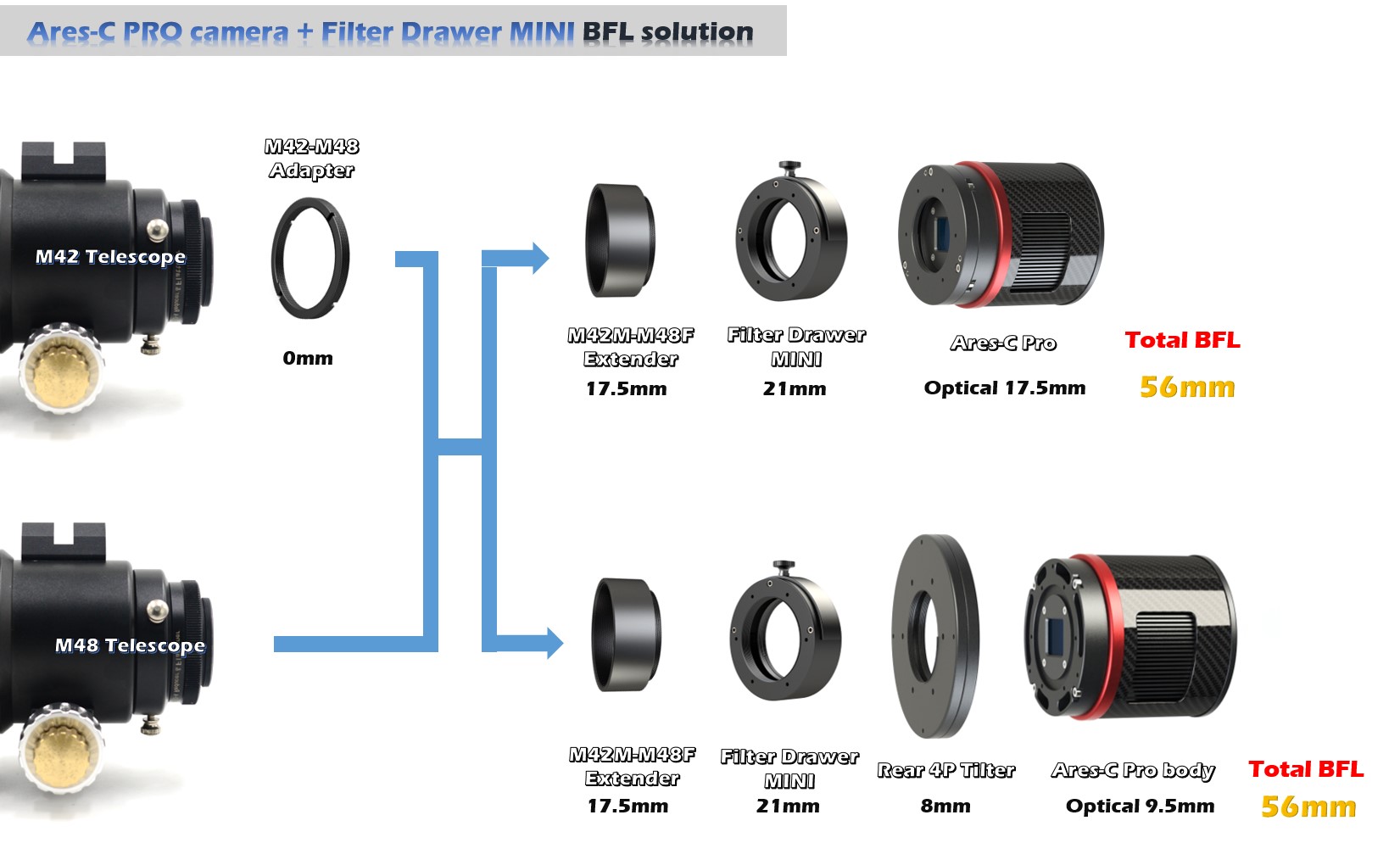


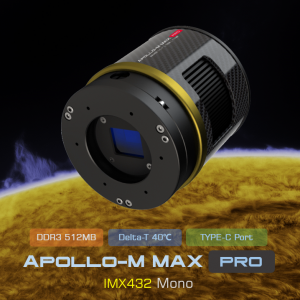
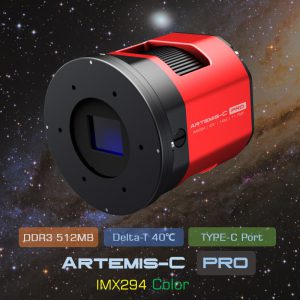
Jeff Jones (verified owner) –
I am very pleased with the performance of this camera. The company is very responsive and helpful. Be aware if your using the device port to connect a ZWO guide camera it will not work. This isn’t a Player One issue. It’s because ZWO has a special USB port. I will probably sell my ASI120mm mini and buy a Player One guide camera.
Sean Wang –
ZWO mini camera only could be recognized by USB-A port. It is not standard USB-C device, it can’t use USB-C to C cable and even use that cable it still can not be recognized by USB-C port on camera or laptop.
Ace3424 (verified owner) –
WHAT AN AMAZING CAMERA! Comes with everything you might need in the box (Big manufacturers should take note!). Performs amazingly. I wish I could afford the bigger one 😀
race.eend1972@gmail.com (verified owner) –
This camera is awesome 👏 I was blow away after first light with it. And it works great with N.I.N.A and Firecapture 👍 The results are great if with low integration time. I will definitely buy other Player One cameras